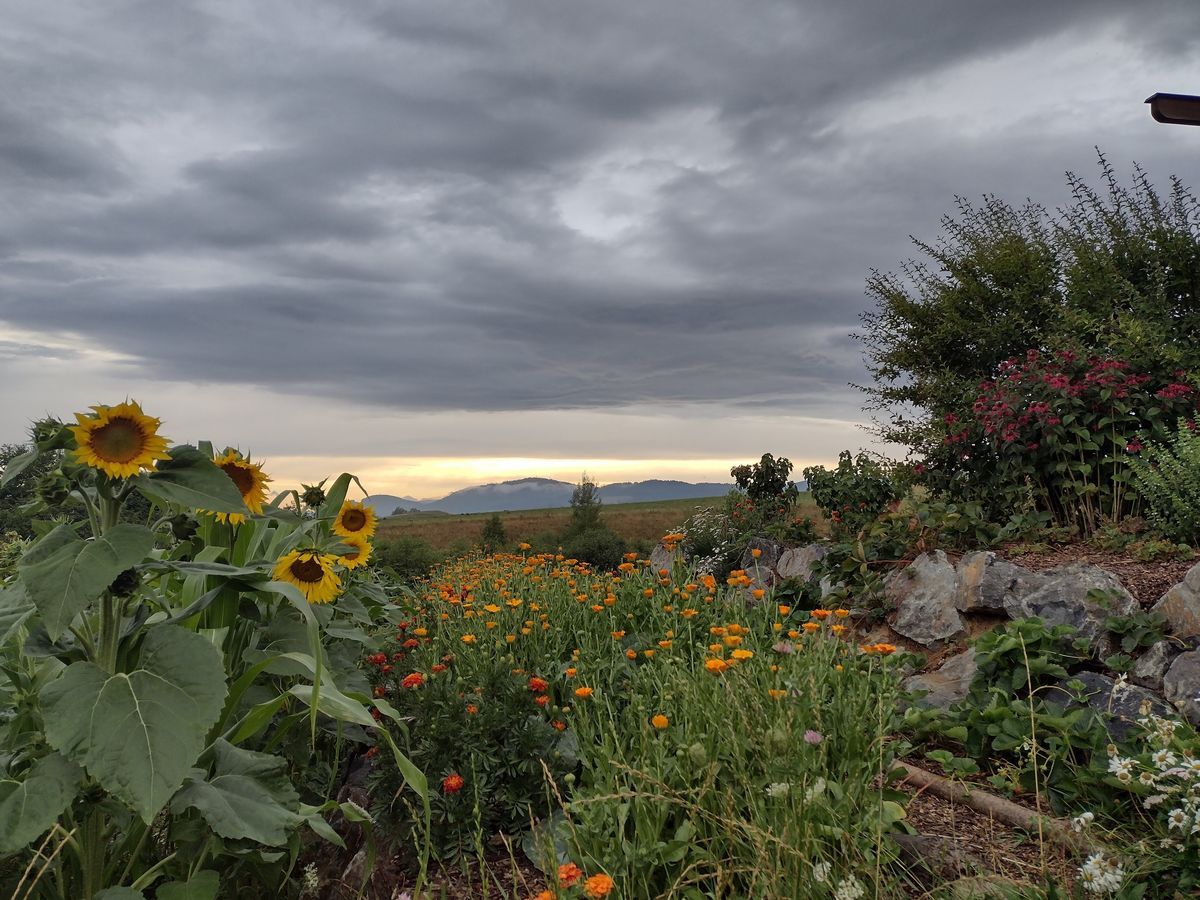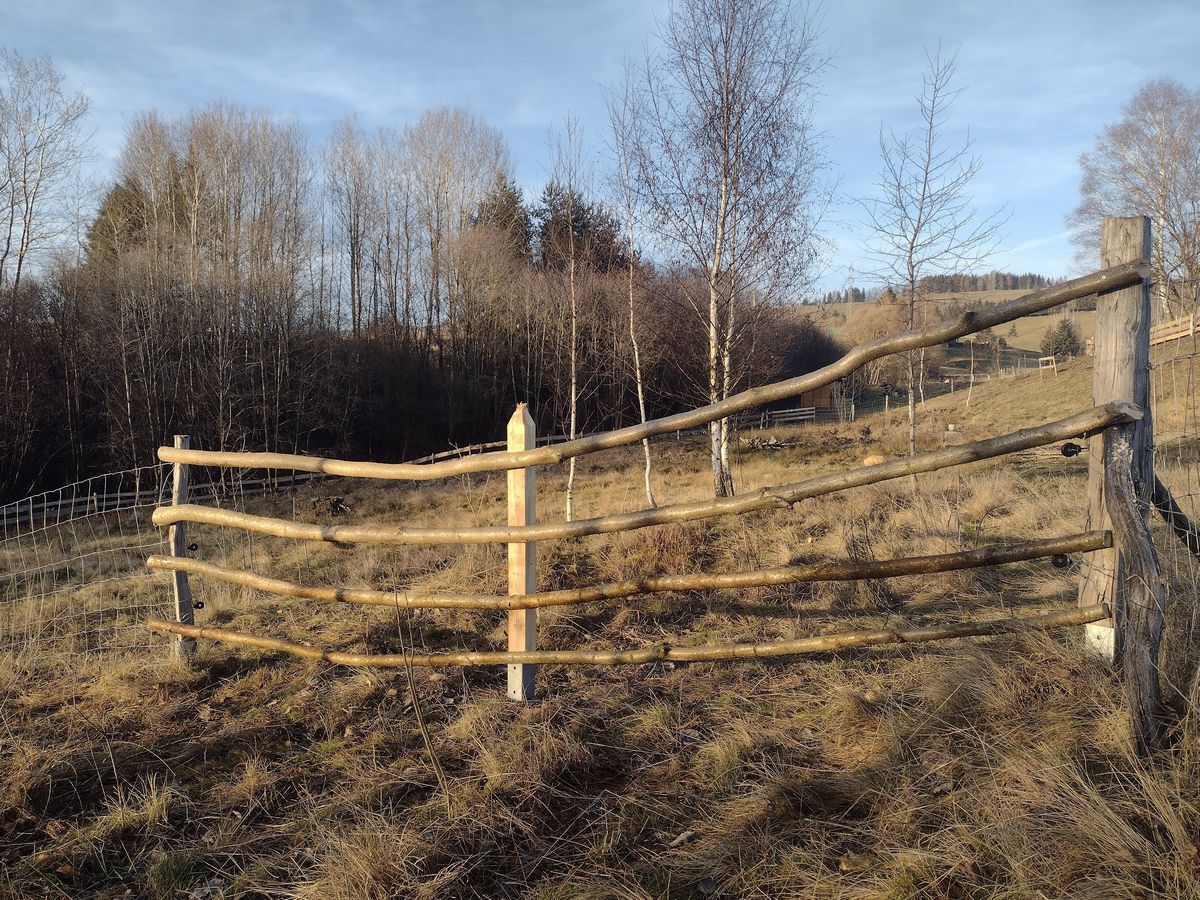Farming principles on our farm or what is permaculture?
The term permaculture originally came from “permanent agriculture". However, the concept has gradually expanded to include sustainable human settlements or sustainable way of living. There are many internet resources available on permaculture, so we will only describe here how we apply some of the principles of permaculture on our farm.
Water management. We are aware of the importance of water and that is why we focus on water retention in all its forms. We have built a retention pond and by terracing the land, we prevent water runoff after heavy rains. In the formerly hay meadow, we planted a number of trees that serve as a windbreak and also prevent excessive evaporation of water.
Responsible use of resources. We strive to use renewable resources - we use solar panels as a source of energy and use wood grown on our land for heating. We use the resource cycle (plants as food for us and animals, which in turn produce fertiliser for the plants). This is why we do not use any industrial fertilisers.
Promoting biodiversity. On our farm, we try to copy the patterns of nature, which naturally creates communities. That is why we grow polycultures; we have planted a number of (fruit but also other) shrubs and trees on the land and keep several kinds of animals. By creating and supporting diverse habitats, we also support species diversity of plants and wildlife (e.g. butterflies, dragonflies, amphibians, birds, etc.), which in turn provide us with a "service" in the form of pest control. Pesticides are therefore unnecessary and, in our opinion, would be harmful.
Use of local resources and assets. We grow the plants that naturally thrive here and keep the animals for which we can create the conditions that best suit their needs. We take advantage of the diversity of our land and adapt accordingly the way in which we use it (steep slopes grazed by sheep, wet places for growing wetland plants, etc.).















